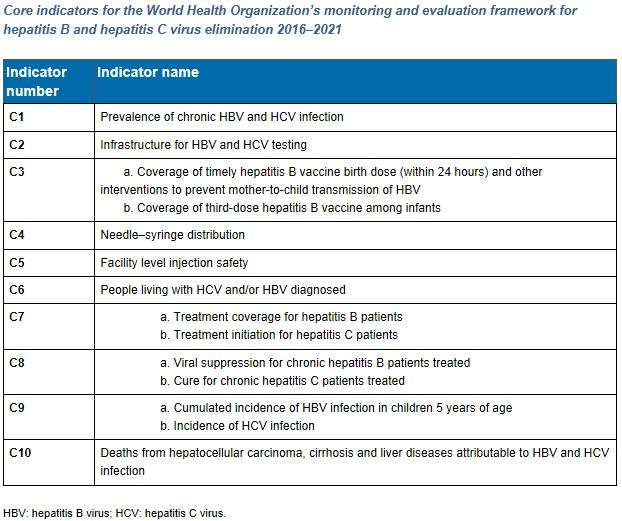Taking stock: Where does Europe stand in the elimination of hepatitis B and C?

In 2016, a regional action plan for Europe contributing to the implementation of the global viral hepatitis elimination strategy was developed by the WHO Regional Office for Europe. In an article published today in Eurosurveillance, the authors take a closer look how Europe is doing according to the ten indicators and targets outlined in this plan. In short: Europe still has some way to go if it wants to eliminate viral hepatitis by 2030.
It is estimated that just under 10 million Europeans from European Union and European Economic Area (EU/EEA) countries are infected with chronic hepatitis B and C infection - most of them without knowing it as viral hepatitis is largely asymptomatic. In light of this, the regional WHO action plan from 2016 can be an important driver to help European countries in their fight against the hepatitis B and C epidemics.
The authors of the article "Towards elimination of hepatitis B and C in European Union and European Economic Area countries: monitoring the World Health Organization's global health sector strategy core indicators and scaling up key interventions" agree that "European countries have already made progress in recent years implementing primary and secondary prevention measures. Indeed, measures aimed at reducing injecting-drug-related harm among people who inject drugs, such as OST (opioid substitution treatment) and NSP (needle and syringe programmes), now reach many of those who need them [such as people who inject drugs, migrants or men who have sex with men] and most countries have in place a hepatitis B vaccination programme with high levels of coverage (95%). These measures have had an impact on the epidemiology of hepatitis B and C." This impact mainly affects the incidence of new infections argues the article.
But only if those that are already infected with viral hepatitis are identified and linked to treatment and care will a drop in mortality also be possible - at a time when an estimated 96 000 Europeans die from hepatitis-related liver disease each year.
Learning from HIV continuum of care?
However, the authors from ECDC, the European Centre for Drugs and Drug Addiction (EMCDDA) and the WHO Regional Office for Europe found in their analysis of the epidemiological and programmatic indicators of the action plan "that current data sources in most EU/EEA countries are insufficient, particularly for assessing the epidemiological burden and for monitoring the different steps along the cascade of care". Which hampers the successful monitoring of Europe's progress toward elimination of viral hepatitis.
ECDC has been working with the EU/EEA countries to improve the quality of the epidemiological data to get a clearer picture of the burden of viral hepatitis across Europe. Screening, care and treatment of the disease could learn from existing models in HIV, the authors find. With a monitoring approach for interventions including diagnosis and treatment along the continuum of care.
The full article will be published in Eurosurveillance on 2 March 2017.
More information: Towards elimination of hepatitis B and C in European Union and European Economic Area countries: monitoring the World Health Organization's global health sector strategy core indicators and scaling up key interventions. DOI: 10.2807/1560-7917.ES.2017.22.9.30476


















